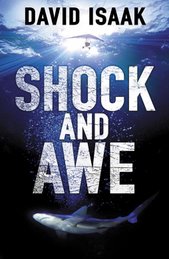Luckily, he has already held forth on this subject in one of his books on writing, Fiction First Aid. (His other book on writing, The Novelist's Essential Guide to Crafting Scenes, continues to do steady business seven years after publication.) Ray has agreed to let me swipe the following from Fiction First Aid as his contribution to this discussion:
Some writers prepare detailed outlines of their novels before they start. They know everything that will happen from the moment the hero pulls out his gun on the first page until he kisses the love interest 358 pages later. For example, when Edgar nominee Robert Irvine once spoke to my writing class about outlining, he brought with him a typical outline that he uses when writing a novel. It was seventy pages long! It included dialogue, character sketches, chapter-by-chapter breakdowns—just about everything but what to eat while writing the book.
On the other hand, when novelist Ross Thomas spoke to my class, he claimed that he never started with an outline, that it took away the thrill of discovery. When his protagonist walked into a room, Ross told us, he wanted to be looking over his shoulder, just as surprised as his character.
I fall somewhere between. I use what I call a slap-dash outline, one that describes only the chapters immediately ahead of me. This allows me to maintain the spontaneity of discovery, yet provides a compass that points me in the general direction I need to go.
When I write my first chapter, I often have no idea what the novel is about. And for the next chapters, I avoid thinking too much about what will happen down the road in the novel. Technically, the beginning of a novel should establish tone, character, and plot. But let’s face reality. The purpose of the novel’s opening chapter is to grab readers by the throat and not let go until they are compelled to find out what happens next. So when I start a novel, I’m thinking only about writing a novel that does that—to me. It must interest me so intensely that I’ll want to write the rest of the novel just to discover what happens next…
Once you’ve written that riveting opening chapter or two, you will need to create some kind of outline. Many writers know the ending of their books before they start writing the first word…Outlines are just road maps to these destinations. For me, the slap-dash outline is road map enough because it encourages my curiosity, which helps me intensify the suspense, yet still lets me know enough about where I’m going not to panic.
[F]or the first third to half of a novel, you can limit your outlining to three or four chapters ahead of where you are. This is enough to keep you from getting stuck, but not enough to kill the freshness or momentum of your writing…
The further along you get in your novel, the more detailed your slap-dash outline will become. For the first half of a book, you might need only a few lines under each chapter heading…However, as the novel becomes more complex, with all the subplots coming together, you may need to write much more under each heading. Also, you may need to outline more than a few chapters in advance. In fact, there will be a definite point, usually two-thirds of the way through, where you’ll have to outline the rest of your novel. Again, you may not stick to the order or even the events you outline, but you’ll at least know the basic elements that need to be in the novel.
The book also includes a reproduction of one of Ray's slap-dash outlines (beneath his comment that "At first glance these notes look like the drug-induced scribblings of someone who claims frequent sightings of UFOs, but they make sense to me.")
Raymond then adds an odd flourish—the After-The-Fact Outline. This outline breaks down the novel into scenes on (shades of Roger Morris) colored index cards. Ray claims this allows him to see the shape of the book better, to note where the tone, length, or pacing of scenes might be repetitive, and consider which scenes might be moved around for maximum effectiveness. Many screenwriters (and Raymond is one himself) lay out their scenes on index cards as a kind of proto-storyboard. In any case, Raymond’s method is an interesting hybrid, with a fairly free-form initial process, followed by a highly organized attack on the finished draft.Wait until I tell him about Roger's A3 transparency paper. He's gonna love that.



No comments:
Post a Comment